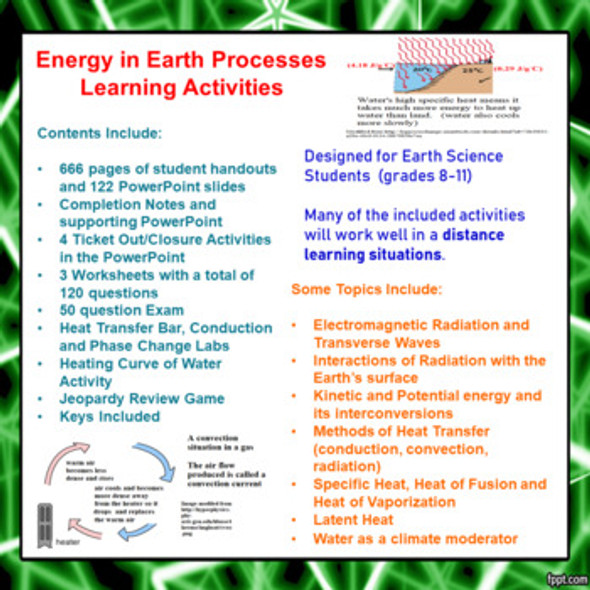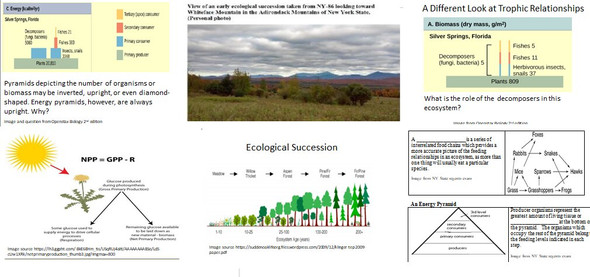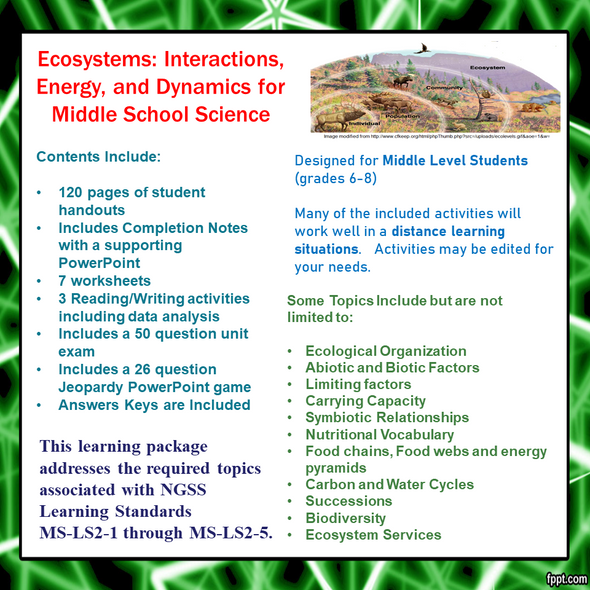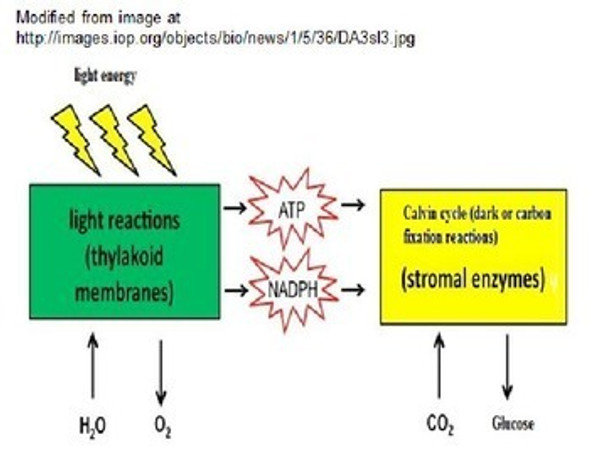Description
This zip file contains several activities (86 pages of student handouts and 1 PowerPoint with a total of 52 slides) which can be used to compose a unit for physics students involving topics relating to work, power and energy. Topics in this unit include work and power (including calculations), potential energy (including theory and calculations involving gravitational and elastic potential energy) , Hooke's law, kinetic energy, work-energy theorem, interaction of kinetic and potential energy, the simple pendulum, types of energy, conservation of energy, as well as many other concepts.
Activities simulating a pendulum activity and Hooke's law are included in this package. These lab activities may also be completed using "hands-on" activities.
These materials may be used in Physics or advanced Physical Science classes. Knowledge of calculus is not required to complete the included activities. The components in this unit correlate to NGSS Standards HS-PS 3.1 and 3.2. The NGSS Standards, Common Core Standards and learning objectives addressed are indicated at the end of this description.
The learning materials in this package can be adapted to distance learning settings or for students in quarantine.
The components of this lesson package can easily be displayed to students using and LCD projector and may be readily modified into formats facilitating smartboard technology.
All documents except for the PowerPoint are included in both word as well as pdf format to allow editing for specific teacher needs. All answer keys are included. The specific contents of the learning package includes the following items (the page count for these items are actual student handouts as answer key page counts are not included):
- Work, Power and Energy Scaffolded Completion Notes (19 pp.)
- PowerPoint to accompany the Scaffolded Notes (52 slides)
- Work Worksheet (28 multiple choice questions and problems) (5 pp.)
- Power Worksheet (25 multiple choice questions and problems) (4 pp.)
- Work and Power Quiz (25 multiple choice questions and problems) (4 pp.)
- Gravitational Potential Energy Worksheet (20 questions) (4 pp.)
- Elastic Potential Energy and Hooke's Law Worksheet (25 multiple choice questions and problems) (5 pp.)
- Hooke's Law Lab (may use online simulation or in lab materials) (8 pp.)
- Pendulum Lab (may use online simulation or in lab materials) (9 pp.)
- Power Lab (3 pp.)
- Elastic Potential Energy and Hooke's Law quiz (25 multiple choice questions and problems) (6 pp.)
- Work-Energy Theorem Worksheet (22 multiple choice questions and problems) (5 pp.)
- Kinetic Energy Worksheet (20 multiple choice questions and problems) (3 pp.)
- Work, Power and Energy Exam (33 multiple choice questions and problems) (7 pp.)
- NGSS, Common Core and Local Learning Standards/Objectives (3 pp.)
NGSS Standards
Students who demonstrate understanding can:
HS-PS3-1. Create a computational model to calculate the change in the energy of one component in a system when the change in energy of the other component(s) and energy flows in and out of the system are known.
HS-PS3-2. Develop and use models to illustrate that energy at the macroscopic scale can be accounted for as a combination of energy associated with the motions of particles (objects) and energy associated with the relative position of particles (objects).
Common Core State Standards Connections:
ELA/Literacy
WHST.9-12.9 Draw evidence from informational texts to support analysis, reflection, and research.
SL.11-12.5 Make strategic use of digital media (e.g., textual, graphical, audio, visual, and interactive elements) in presentations to enhance understanding of findings, reasoning, and evidence and to add interest.
Mathematics
MP.2 Reason abstractly and quantitatively
MP.4 Model with mathematics.
HSN-Q.A.1 Use units as a way to understand problems and to guide the solution of multi-step problems; choose and interpret units consistently in formulas; choose and interpret the scale and the origin in graphs and data displays.
HSN-Q.A.2 Define appropriate quantities for the purpose of descriptive modeling.
HSN-Q.A.3 Choose a level of accuracy appropriate to limitations on measurement when reporting quantities.
Learning Objectives
Upon the completion of this unit the student will be able to:
1. define the term energy.
2. define the term work.
3. recognize when work is done on or by a system, the total energy of the system is changed.
4. recognize work and energy are scalar quantities.
5. recognize that a force must produce a motion on an object for work to be done.
6. recognize that energy and work are measured in joules.
7. use the formula work, W= Fd to perform calculations.
8. define the term power.
9. use the formula for power, P=W/d, P=Fd/t and P = Fv to perform calculations.
10. explain what is meant by thermal energy, internal energy and nuclear energy.
11. explain the difference between nuclear fission and nuclear fusion.
12. explain what is meant by electromagnetic energy.
13. list some forms of electromagnetic energy.
14. recognize that electromagnetic energy has a wave-particle duality.
15. define the term field.
16. recognize that potential energy is sometimes stored in fields.
17. explain what is meant by an electromagnetic field.
18. recognize that radiation may travel in electromagnetic fields.
19. recognize that when two objects interact by changing positions in a field, the energy stored in the field is changed.
20. briefly explain how the following devices convert energy from one form to another; photovoltaic cell, generator, motor and battery.
21. define the term potential energy.
22. recognize that if no energy is lost due to friction, the work done to bring an object to a different position or condition is equal to its change in potential energy.
23. define the term gravitational potential energy.
24. recognize the loss of gravitational potential energy by a falling object is equal to its gain in kinetic energy assuming friction is not involved.
25. utilize the formula for gravitational potential energy, PE = mg∆h in calculations.
26. define the term elastic potential energy.
27. explain what is meant by the equilibrium limit and elastic limit of a spring.
28. recognize the elongation or compression if a spring is proportional to the force placed upon it.
29. utilize the formula for Hooke's Law, Fs = kx in calculations.
30. define the term spring constant.
31. recognize that a stiffer spring has a higher spring constant value than a more elastic spring.
32. utilize the equation PEs = 1/2 kx2 in calculations.
33. define the term kinetic energy.
34. utilize the equation KE = 1/2 mv2 in calculations.
35. define the term conservative force and list an example of a conservative force.
36. define the term nonconservative force and list an example of a nonconservative force.
37. explain what is meant by a closed system.
38. state the law of the conservation of energy.
39. define the term total mechanical energy.
40. explain what is meant by an ideal mechanical system.
41. recognize in an ideal mechanical system, the sum of the changes in the kinetic and potential energy in the system is zero.
42. describe the gravitational potential energy and kinetic energy relationships in a swinging pendulum.
43. describe the gravitational potential energy and kinetic energy relationships involved in an object in free fall.
44. explain what is meant by a nonideal mechanical system.
45. recognize the kinetic energy that is not accounted for in a nonideal mechanical system often appears in the form of heat.
46. recognize that all mechanical systems of the earth are nonideal systems.
47. explain how to calculate the energy possessed by a nonideal mechanical system.
48. recognize the availability of energy limits what can occur in any system.
49. describe an example of an uncontrolled energy system evolving toward a more stable state.
Terms of Use
Purchase of the product is for classroom use by the purchaser only. It is a violation for individuals, schools, and districts to redistribute or sell this item on the Internet or to other individuals. I do encourage you to use and edit these documents to suit your needs with your own students in distance learning environments.
This work is licensed under a Creative Commons Attribution-NonCommercial-ShareAlike 4.0 International License.

























